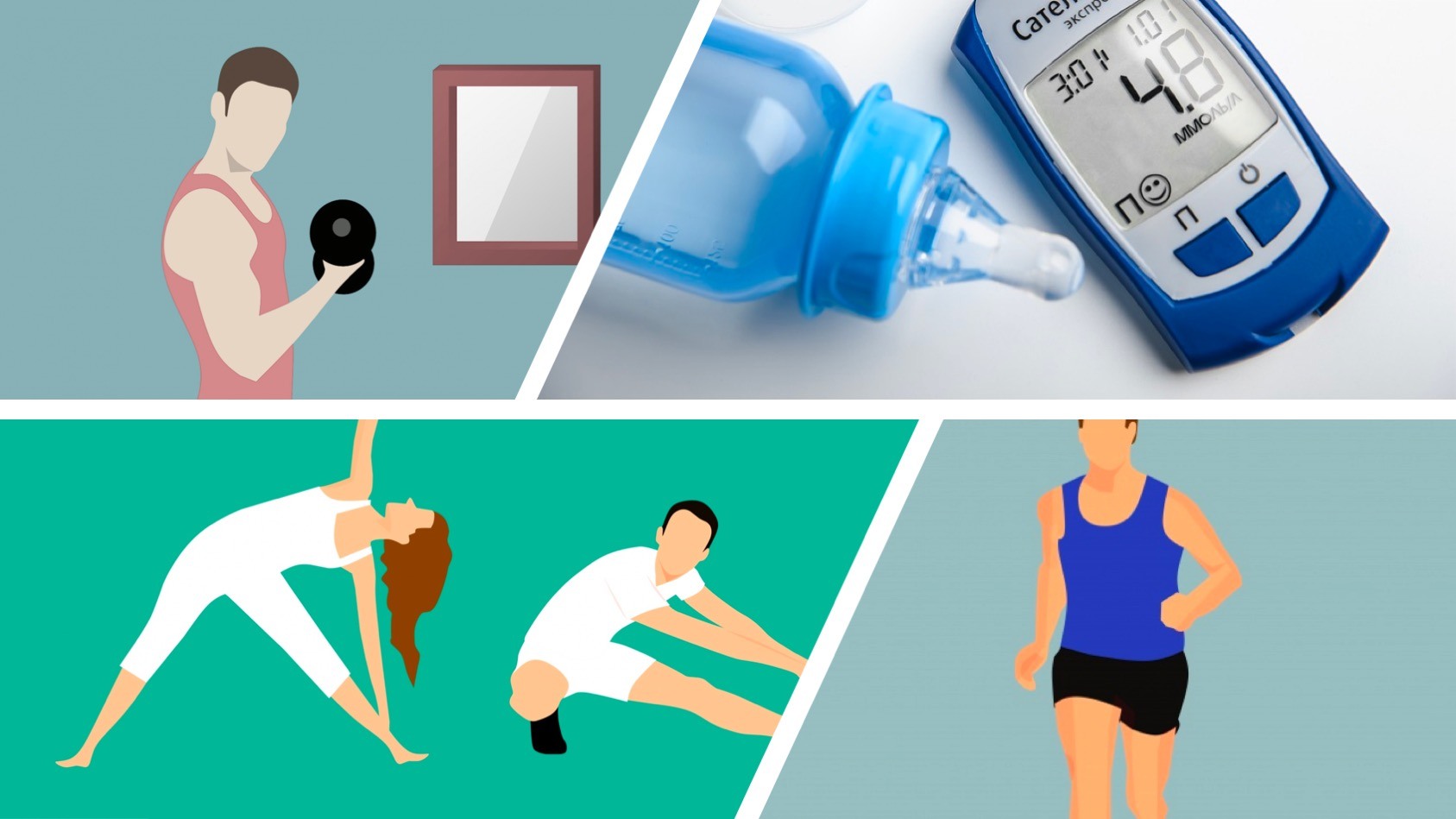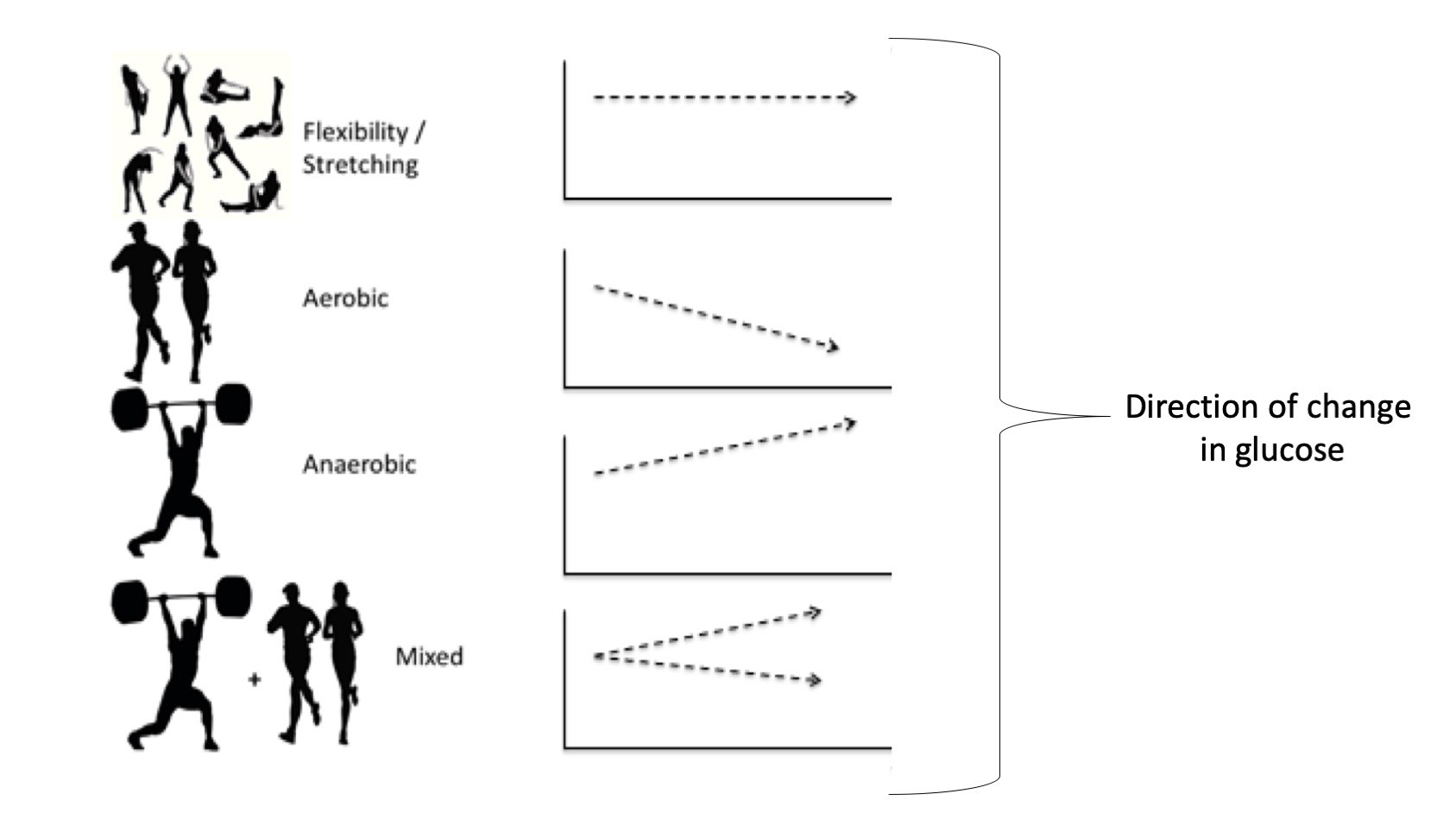 Advice for Professionals
Advice for Professionals

Types of exercise and their effects on blood glucose
Type of exercise
Being able to define what type of exercise a patient is doing is key to understanding what will happen to their blood glucose when they perform that exercise.
In simple terms there are three types of activity
1. Flexibility exercises
These improve the range of motion in muscles and joints. This form of exercise is recommended to be performed before and after the other forms of exercise to limit injury. Examples yoga, Tai chi.
2. Aerobic exercises.
These exercises use oxygen and help to improve how long you can continue to do an exercise for (cardiovascular endurance). Examples include cycling, swimming, walking, skipping rope, rowing, running, and hiking.
3. Anaerobic exercises.
These exercises do not use oxygen and help to improve short-term muscle strength and anaerobic capacity. Examples include weight training, high-intensity training, or sprinting.
Some sports or exercises can be a made up of a mixture of these types of exercise. Most team games are a mixture of aerobic and anaerobic.
Effect of different types of exercise on glucose
People with Type 1 diabetes can have variable responses to exercise. In general though the response to each exercise is as follows;
- Flexibility exercise - glucose will tend to remain steady whilst doing this form of exercise.
- Aerobic exercise - glucose will tend to fall whist doing this form of exercise.
- Anaerobic exercise - glucose will tend to rise with this form of exercise.
- Mixed exercise - the change in glucose will depend on the make up of the exercise.
- If more aerobic than anaerobic glucose will fall.
- If more anaerobic than aerobic glucose will tend to rise.
- If equal amounts of aerobic and anaerobic exercise then glucose will remain steady.
Figure 1 summaries the effect of different exercises on blood glucose

